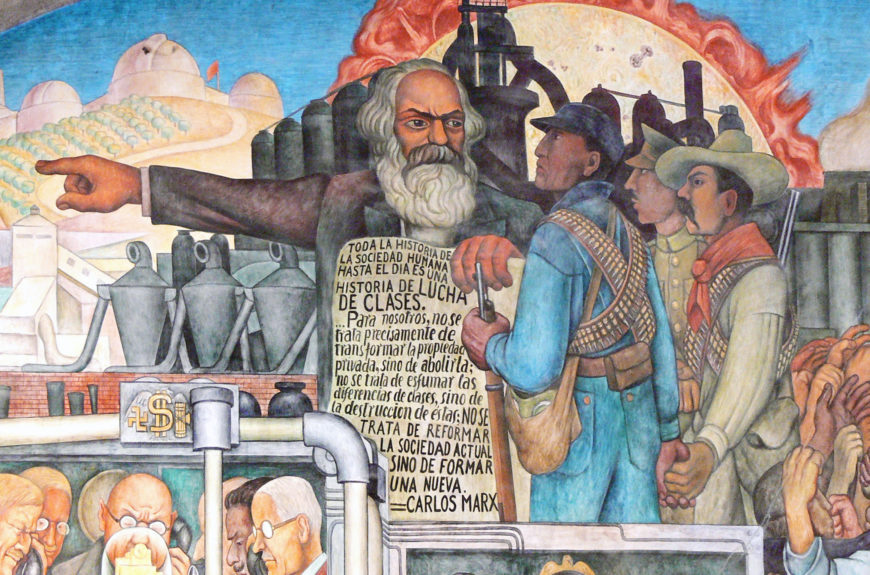The History of Mexico: Diego Rivera’s Murals at the National Palace
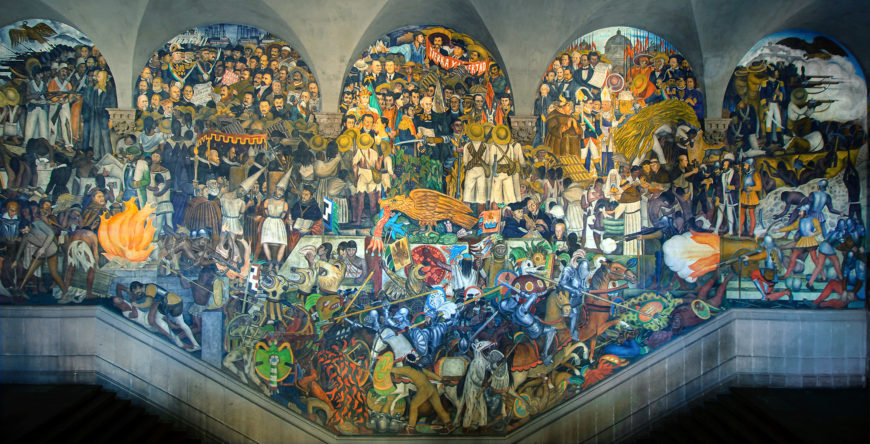
In an overwhelming and crowded composition, Rivera represents pivotal scenes from the history of the modern nation-state, including scenes from the Spanish Conquest, the fight for independence from Spain, the Mexican-American war, the Mexican Revolution, and an imagined future Mexico in which a workers’ revolution has triumphed. Although this mural cycle spans hundreds of years of Mexican history, Rivera concentrated on themes that highlight a Marxist interpretation of history as driven by class conflict as well as the struggle of the Mexican people against foreign invaders and the resilience of Indigenous cultures.
Diego Rivera, History of Mexico murals, 1929–30, frescos in the stairwell of the Palacio Nacional, Mexico City
Rivera had to design his composition around the pre-existing built environment of the National Palace. Rivera painted in the historical buon fresco technique, in which the artist paints directly upon wet plaster that has been applied to a wall resulting in the pigment being permanently fused to the lime plaster. Such murals were common in pre-conquest Mexico as well as in Europe.
The North Wall
Against the backdrop of the Valley of Mexico (where Tenochtitlan and now Mexico City are located), Rivera renders a Mesoamerican pyramid and various aspects of Aztec life. He represents figures grinding maíz (corn) to make tortillas, playing music, creating paintings, sculpture, and leatherwork, and transporting goods for trade and imperial tribute.
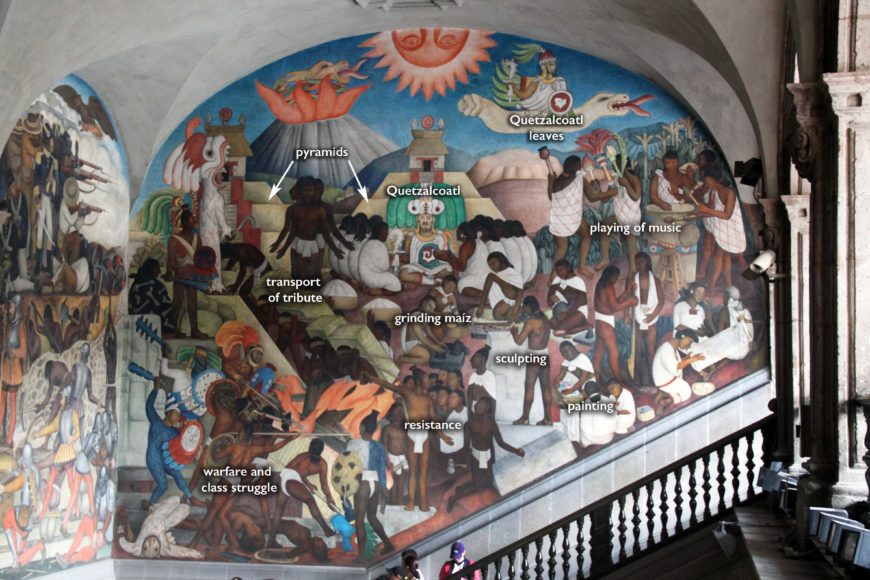
The West Wall
On the West Wall and in the center of the stairway, visitors are confronted with a chaotic composition titled From the Conquest to 1930. The wall is divided at the top by corbels from which spring five arches. Across the top, In the outermost sections, Rivera represents the two nineteenth-century invasions of Mexico—by France and the United States respectively. In the lower section of the mural however, there is no such distinction between, for example, scenes of the Spanish conquest of the Aztec empire, the subsequent destruction of Mesoamerican painted books (now called codices), the arrival of Christian missionaries, the destruction of pre-Columbian temples, and construction of new colonial structures—emphasizing the interrelated nature of these events.
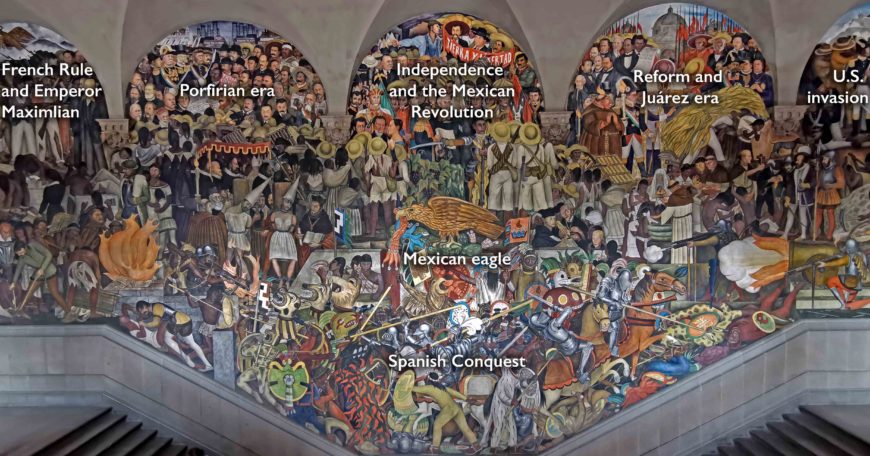
The South Wall
Rivera’s politics become more evident on the South Wall, titled Mexico Today and Tomorrow, which was painted years later in 1935. Mexico Today and Tomorrow depicts contemporary class conflict between industrial capitalism (using machinery and with a clear division of labor) and workers around the world. In the lower section Rivera depicts campesinos (peasant farmers) laboring, urban workers constructing buildings, and his wife Frida Kahlo with a number of school children who are being taught as part of an expansion of rural education after the Revolution.
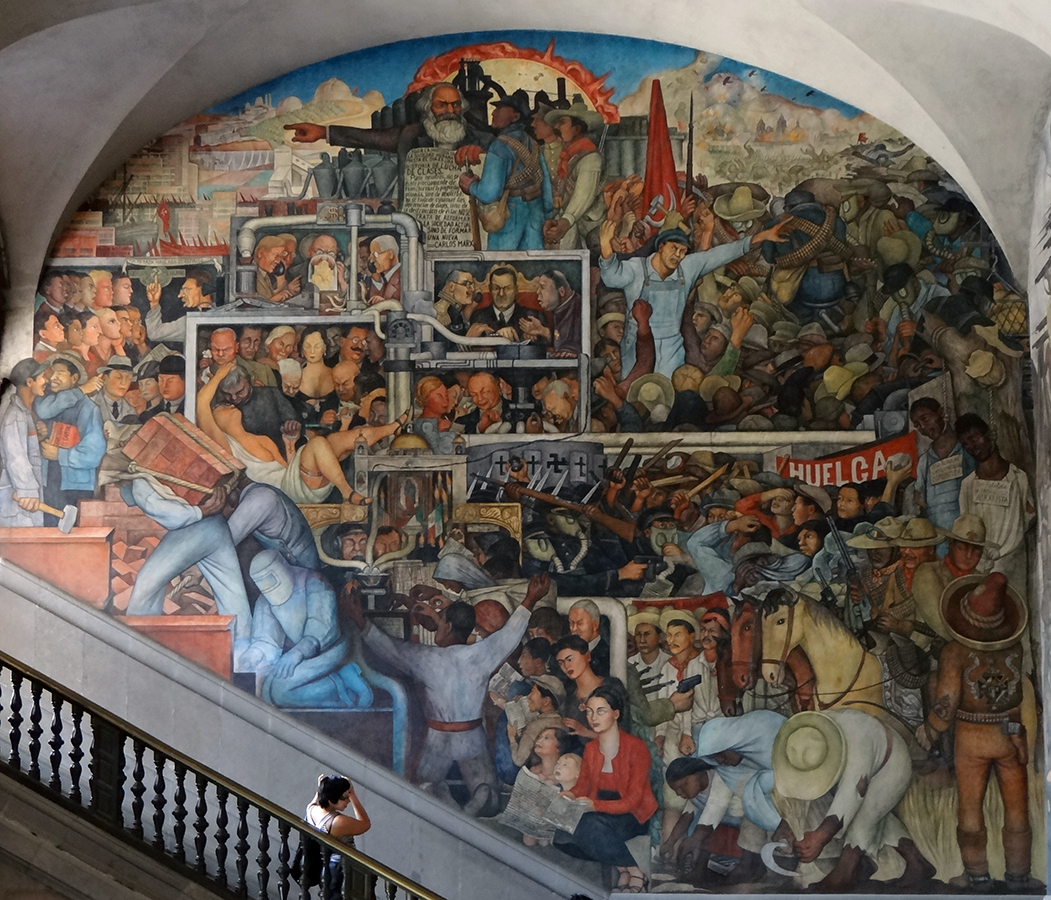
To the right, workers are being oppressed by police wearing gas masks, yet just above this scene a figure in blue emerges from a mass of uprising workers, their fists raised in the air against the backdrop of downtown Mexico City. The narrative culminates in a portrait of Karl Marx who is shown pointing wearied workers and campesinos towards a “vision of a future industrialized and socialized land of peace and plenty.”[1] Unlike the non-linear composition of the West Wall, here Rivera expresses his vision for the future of Mexico, a winding path that leaves oppression and corruption behind.[2]
